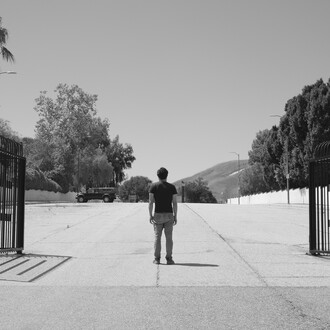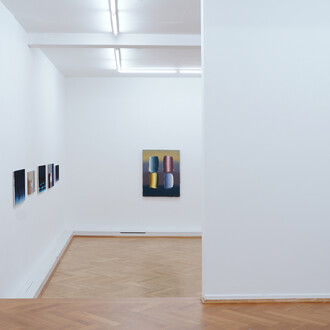Upon establishing his foundation in Berlin in 2003, Helmut Newton expressed his wish to provide a forum not only for his own works, but for that of other photographers as well. His wish continues to be fulfilled posthumously, now with two unique projects by two of Helmut Newton’s friends and colleagues.
“Undressed” by Mario Testino is a site-specific installation comprising fashion and nude photos, with numerous unpublished studio portraits. Meanwhile, “Pool Party” by Jean Pigozzi is presented in June’s Room. This installation features small-format, snapshot-like images taken around Pigozzi’s swimming pool in Cap d’Antibes, where Helmut and June Newton, among other A-listers, came to unwind or frolic in glamour. Jean Pigozzi, a photographer, art collector, and international businessman, was previously featured at the Helmut Newton Foundation with his portraits and selfportraits in the “Paparazzi” group exhibition in 2008. Here once again, we encounter spontaneous, surprising, and very private images of Pigozzi’s friends, united around the pool at Villa Dorane, which was built for his father Henri in 1953 by Ettore Sottsass. The photographs feature the likes of Mick Jagger and Bono, Liz Taylor and Naomi Campbell – many of the same VIPs that Newton portrayed in his work.
With the installation “Undressed” which was conceived exclusively for the Helmut Newton Foundation, Mario Testino explores the physical notion of undressing through work that analyses the boundaries between fashion, eroticism, anatomy and art, as well as a metaphorical undressing of Mario Testino that goes beyond the public perception and delves deeper into his archive and his working practice. 50 larger-than-life images are affixed directly to the walls in three of the foundation’s exhibition halls, reaching into the corners of the room and up to the ceiling. This presentation form is unique to both Testino’s work as well as the exhibition history of the Helmut Newton Foundation, filling the rooms with bodies and emotions to create an imposing human landscape. Some of the images depict individual women and men in their twenties and thirties who are often unclothed, some extensively tattooed; the natural way in which their nudity is expressed both surprises and fascinates. In other images, the models just barely cover their skin, with an overcoat, bathing suit, or underwear.
Despite the underlying sensuality that Testino conveys in his male-female or same-sex group photos, their amorous play never slips into the obscene or pornography. Testino has elevated fashion photography into the realm of art. Consistent with his wider practice, the origins of the body of work lie in older master paintings as much as the history of photography. Helmut Newton is represented by original prints in various formats from the three key genres of fashion, portraiture, and nudes. Selected from the foundation’s archive, they have for the most part not been previously shown. These complement Newton’s well-known work and include portraits of Jeremy Irons at the Ritz Hotel in London, Michael Gross at a swimming pool in Dortmund, as well as nudes taken at an Italian wine estate and for a ballet by Jan Fabre. Newton famously and subtly combined nudity and fashion – and to this day invariably turns those of us who view his work into voyeurs. Newton’s photographs thus document and comment on the shifting role of women in Western society at the time. This aspect applies to all of his work in its timeless elegance – and the same can be said of Mario Testino.
















